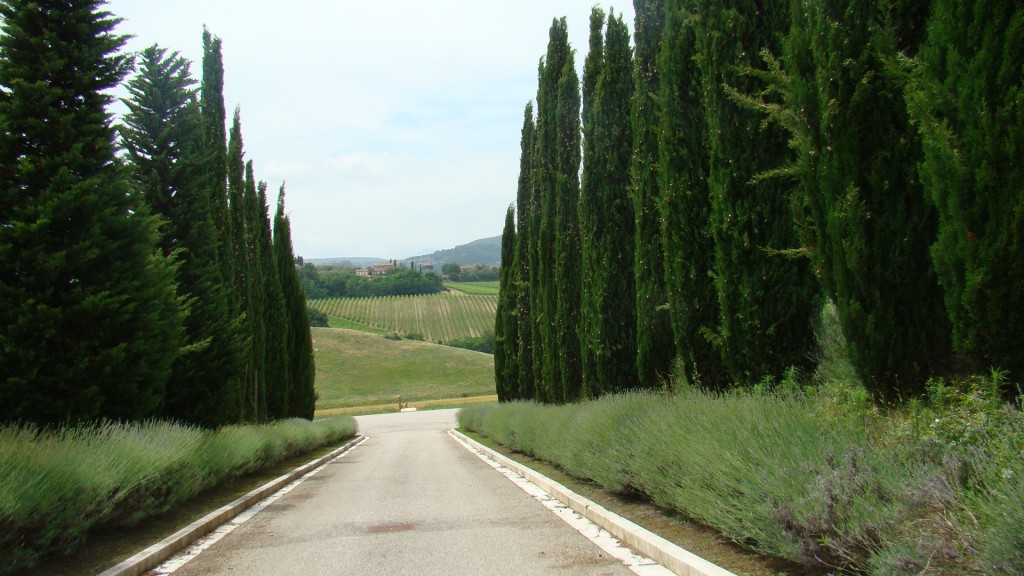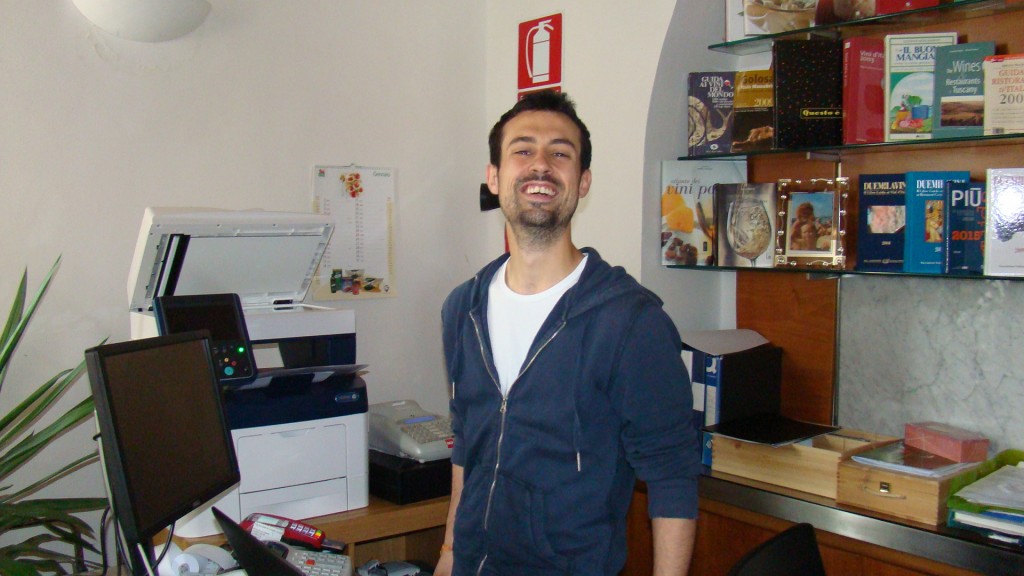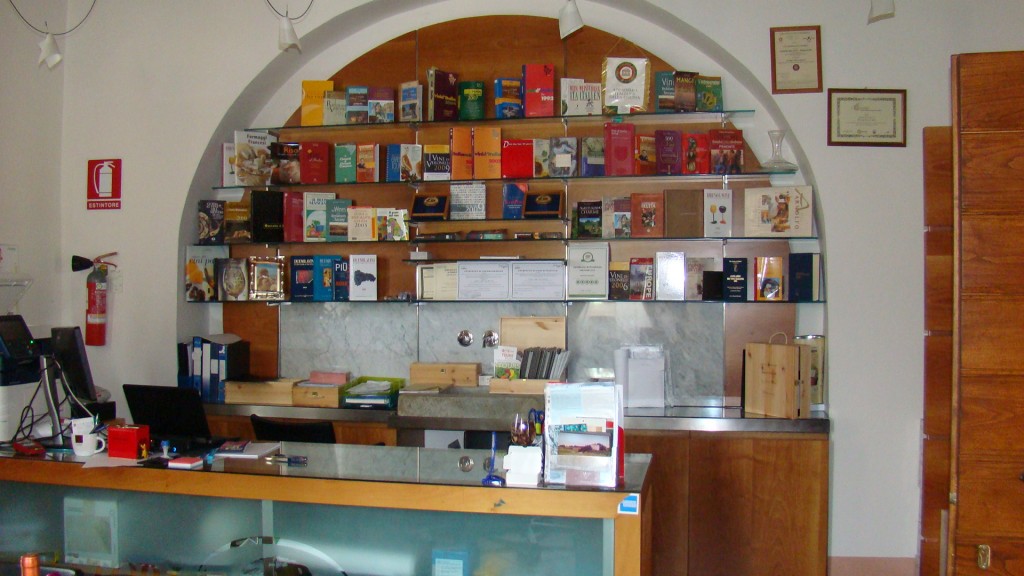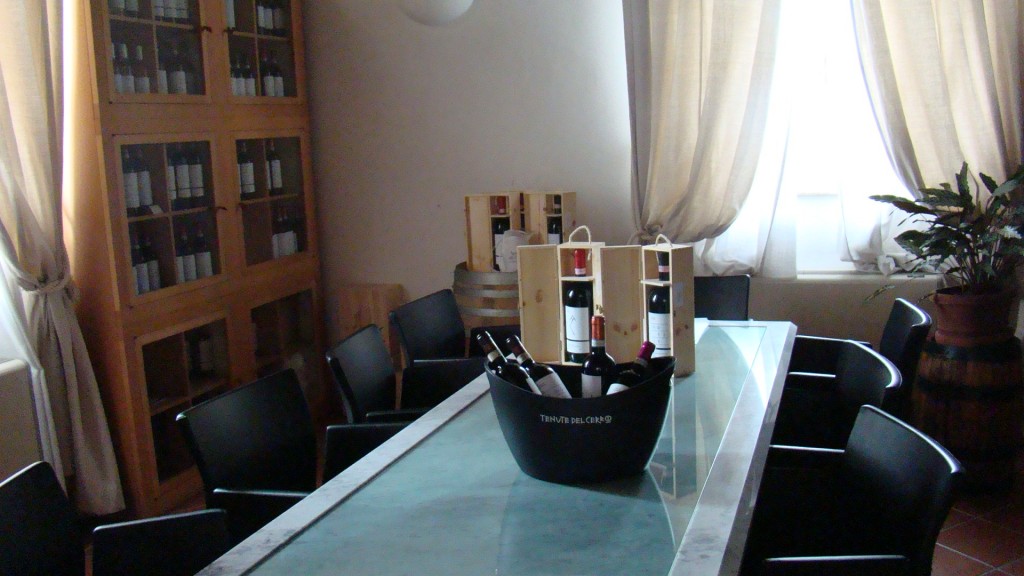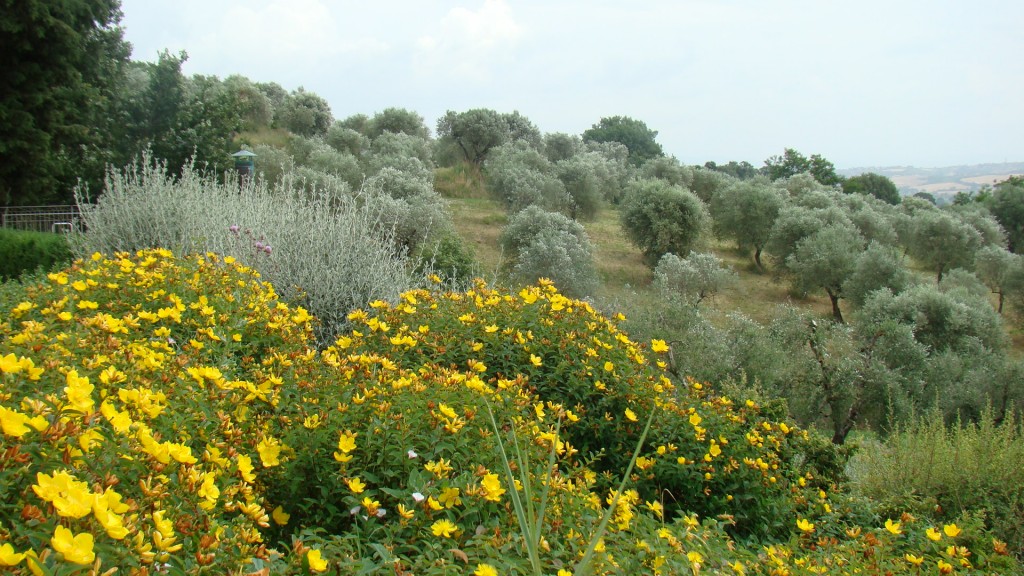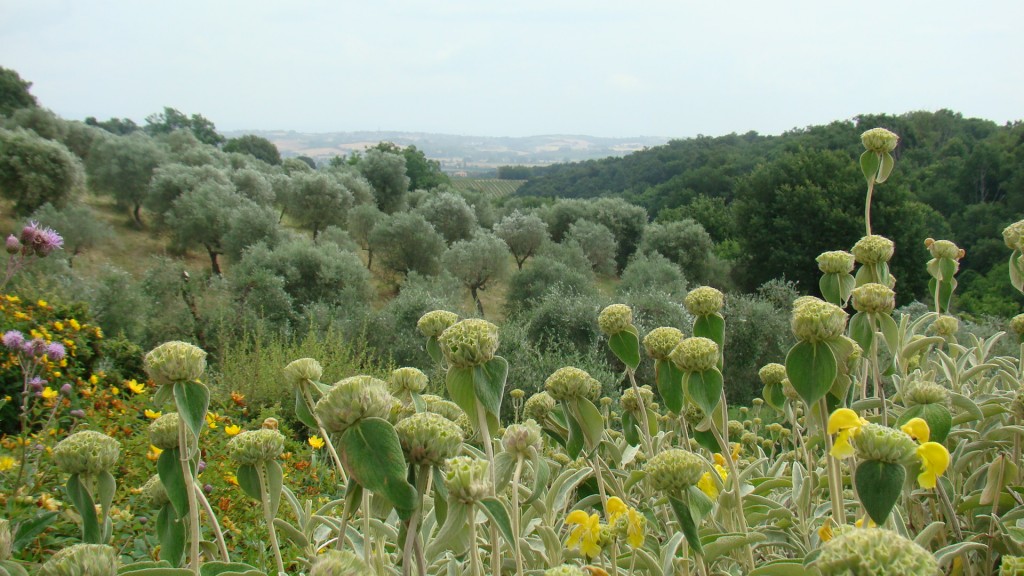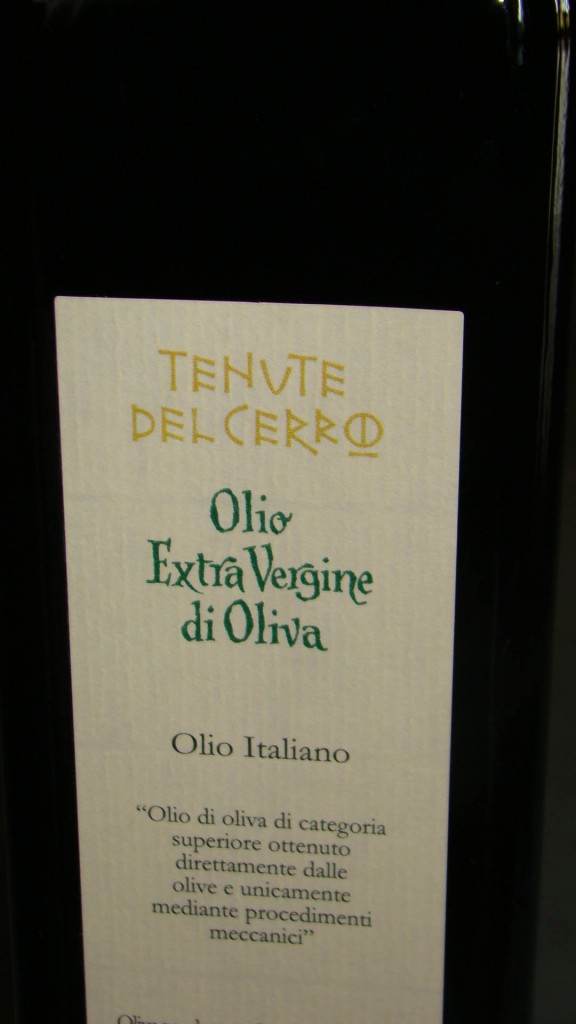Nancy and I are travelling to the Tuscan town of Montepulciano to have lunch with friends at La Grotta, one of our favorite restaurants. Given that I have to go anyway–I’m hardly fighting it–I’ve decided to interrupt my researches here in Umbria and check out some Tuscan wine. No sense missing an opportunity to try something new. I’ve targeted the Tenute del Cerro, a well known produttore in the district of Acquaviva, a few kilometers east of Montalcino in the rolling Colli Senesi–the Sienese Hills.
We have decided to take the direct route, the Super Strada SS140 (take this description with a grain of salt) which winds back and forth across the Tuscan-Umbrian border, climbs to about 1800 feet and descends to the lovely town of Tuoro on Lake Trasimeno, Italy’s largest (outside of Guarda) and and one of its most beautiful lakes. From here, we follow the autostrada to Florence for a bit and then swing south-west on the SP10/SP8 through rolling hills and tidy, picturesque villages towards Montepulciano.
Time for some background: The Tuscans and the Umbrians don’t like each other very much. Throughout most of the middle ages and up to the establishment of united Italy in the 1870’s, Umbria belonged the Papal States: that is, it was a possession of the Catholic Church. Tuscany at the same time was the site of feuding dukedoms struggling to control the province. During this time, Tuscany played unwilling host to foreign armies from France, Spain, Germany and Austria as well as armies from “neighbors” such as Venice, Milan and Naples. History has definitely been a bit messier there. In any case, the Tuscans see the Umbrians as happy-go-lucky, rather simple peasant folk who have lived their lives as welfare kings and queens in the bosom of the Mother Church while they have always had to struggle for their existence. The Umbrians, on the other hand, see the Tuscans as crude money-grubbing materialists who have lost all touch with the virtues of the simple life and who take advantage of their cultural heritage to squeeze every nickle out of the hapless tourists who visit them.
Enough of these musings–back to wine. The odd thing to remember about the Vino Nobile di Montepulciano is that it doesn’t have any Montepulciano grapes in it. The Montepulciano grape is the heavy hitter of the central Adriatic coast, appearing in excellent wines such as Montepulciano d’Abruzzo, Rosso Piceno and Conero. The Vino Nobile, on the other hand, is, like most Tuscan wines, made primarily from Sangiovese. The town of Montepulciano, due to its fame, was granted a DOC of its own in spite of the confusion. In fact, the town of Montepulciano is so famous in winemaking that Il Vino Nobile di Montepulciano became the first DOCG created.
Although the winery, Tenute del Cerro uses the small town of Acquaviva di Montepulciano as its address, it is actually about 5 kilometers outside the town on a “white road”. “White Road” in Italiance parlance covers anything from a dirt road to a goat path. This one was on the finer side, being a dusty country gravel road just big enough for two cars to squeeze by. We tried ignore all the gravel banging the bottom of the car as we made our way gently through rolling fields of green grapes overlooked by gorgeously painted Italian country houses. At a small bend in the road, we spied our goal.
The Tenute del Cerro consists of an elegant, gated entrance forking in one direction to a truely elegant palazzo, the Villa Granzianella, an agriturismo with meals and rooms, on one side and the lovely cantina Tenute del Cerro on the other. We were greeted at the cantina by Giovanni, a tall young man in his mid twenties from Milan who is doing an internship here as part of his studies in Hospitality Management at the University. He is aiming to specialize as a sommelier–why didn’t I think of this instead of engineering? He gave us an interesting talk on the property, the Etruscan surroundings and the winemaking on the property. The winery is very proud of its ancient Etruscan heritage, and pays homage to it through the labels it uses for its wines.
Montepulciano on it’s hilltop nearby.
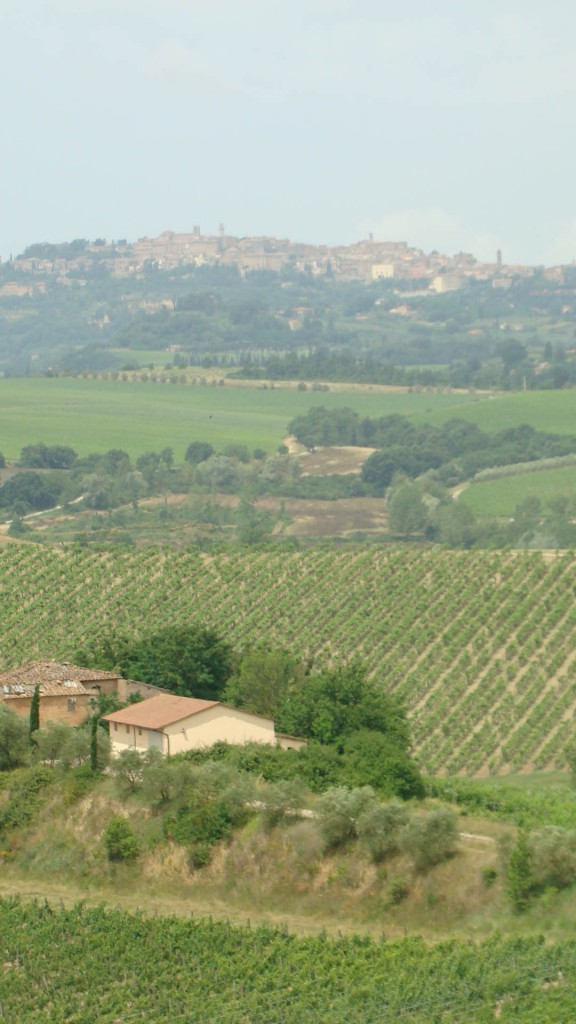
View across the vine-laden countryside.
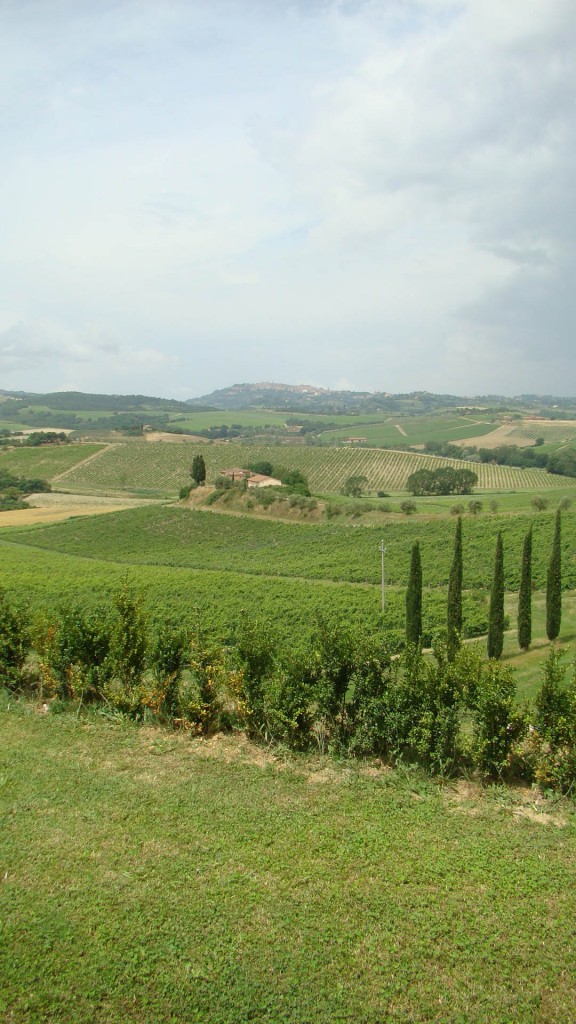
Seating on the lawn of the agriturismo. Beautiful views.
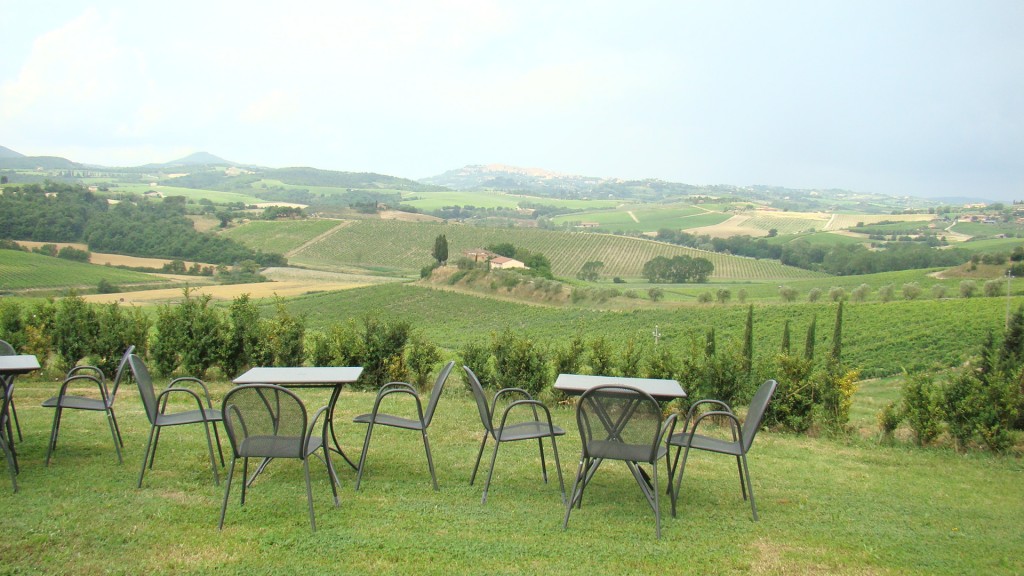
Our first tasting was a pleasant surprise: the Vermentino 2013. Vermentino is a white grape that I have always associated with Sardinia, although it does appear under various other names in the Piedmonte, Liguria and Corsica. I’ve always found it rather light and inoffensive, but unremarkable in character. If you can remember the days of Bolla Soave, you’ll have an idea where I’m coming from–it goes down nicely but makes hardly any impression. I was surprised to find that it is cultivated to a modest extent in Tuscany. This 100% Vermentino was big and fat in the mouth, unlike the rather thin impression that most Vermentinos have made on me it the past. It had a lovely straw color, with a fruity nose. I found it a bit mineral and steely on the tongue with a nice long finish. A definite keeper for a nice house wine and I’m sure it would go nicely with fish, pasta or light white meats. I’m going to have to extend my investigation of Vermintino to see if the Sardinians are keeping the good ones to themselves, or whether this is just a Tuscan terroir effect.
We followed the Vermintino with a Chianti Colli Senese 2012. Although the property specializes in Vino Nobile, the winemakers feel that there are many other varietals that blend extremely well with Sangiovese that produce lighter, more fragrant and more immediately drinkable reds than the Vino Nobile, which is a wine of considerable heft and requires aging. Because Montepulciano lies in the Colli Senesi (Sienese Hills) district of Chianti and these blends meet the requirements of the DOC Chianti Colli Senese they are sold as such. This chianti was a light cherry with ruby undertones. It was light and tingling on the tongue, with great fruit and a tiny touch of tannin from six months in large oak barrels. It had an excellent finish, leaving just a hint of jam. Given its character, I think it would make a great accompaniment for pasta, pork and grilled meats. We have enjoyed it several times with pastas with red sauce and chicken and it has been perfect.
These labels are using a text font reminiscent of the ancient Etruscan writing. This is the Chianti.
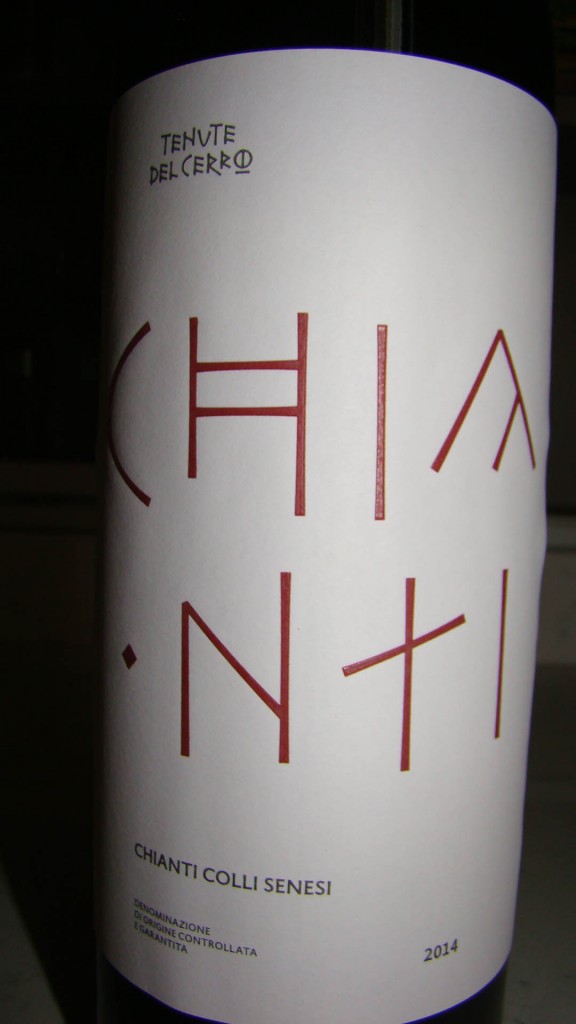
The Chianti was followed by the centerpiece, the Vino Nobile di Montepulciano 2012. This wine, 90% sangiovese and 10% mammolo, an antique tuscan grape that confers a vivid purple hue to the wine. (For trivia lovers: Mammolo is what the Italians call Bashful of the seven dwarfs.) The wine has an imposing color, the cherry red of the sangiovese darkened by the purple tint of the mammolo. The nose is floral, with a hint of vanilla. In the mouth it is very full, with a moderate touch of oak from 12 months in large slavonian oak barrels (botte). The wine sports a moderate touch of tannin that tells me it would be rewarding to lay this down for a while if you are capable–I am not. Giovanni is of the opinion that it could go about ten years. It is one of the best Vino Nobiles I have tried in a while.
The Vino Nobile di Montepulciano
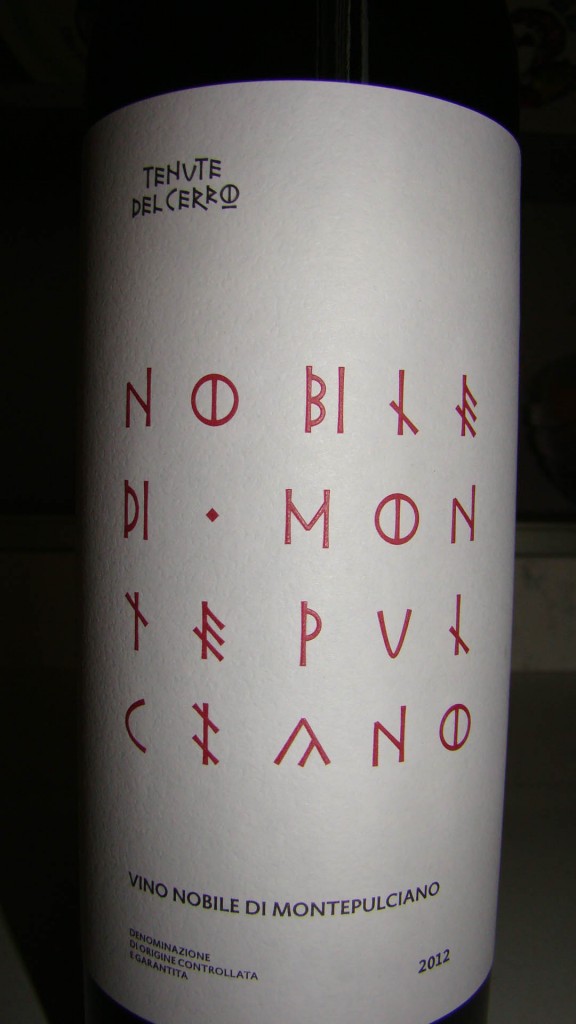
Although we begged for more, the top of the line Vino Nobile “Antica Chiusina” had been drunk up–damn you British or German tourists or whomever! Another reason to return for further investigation, so I’m not completely down about it. In place of the Antica Chiusina, Giovanni surprised us with an alternative offering he was very fond of, a Sagrantino from Umbria(!). It turns out that Tenute del Cerro is one of four autonomous wineries owned by Unipol, a large insurance agency. The other wineries are: la Poderina in Montalcino; Monterufoli, in the Val di Cornia outside Pisa; and Còlpetrone, near Montefalco. We decided to pass on the offer. There’s no sense getting ahead of ourselves in our investigations. Besides, lunch was calling in Montepulciano. Naturally with a nice bottle of the Vino Nobile. More on that later. Ciao!
[Nancy here. Luther did not include the fact that this cooperative of wineries also includes an olive oil producer that coincidentally is just outside of Umbertide! We had seen them but never visited before. They have labels much like the wine labels. I purchase one bottle.]

